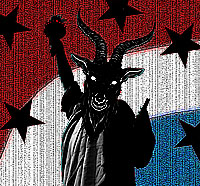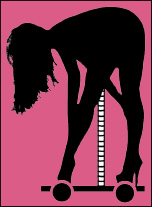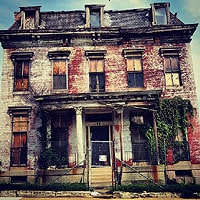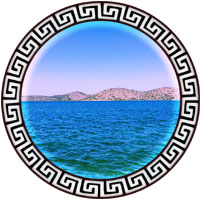Of all of Howard’s savage heroes, fully half of them are Gaelic: Kull, Esau Cairn, Conan, Cormac Mac Art, and this murderously savage son of Erin, Turlogh Dubh O’Brien. The tale begins—oddly for Howard—as a retrospective story told by Turlogh to his Saxon and Spanish fellows as they go on Crusade. They are gigantic warriors as well—but this guy has got that psychological edge, and a tale to tell that could not be rivaled in intensity by whatever meatstorm these three were about to plunge into.
Perhaps the intensity of the back story put Howard off in finishing the draft, which has Turlogh siding with a group of Caucasian nomads on the Russian steppes that were halfway between Scythian and Cossack in their evolution and were facing war against a superior Turkish force.
Turlogh sided with the Caucasians against the Asians on sight, when he saw that three Turks, “…hunted a wounded warrior, who was certainly of a tribe more akin to Turlogh’s own people than the pursuers.”
To the postmodern reader this is a deeply offensive plot twist, but deeply realistic as well, reminding one that Howard trafficed primarily in realism: from sorcerers that used tricks, gadgets and the power of suggestion, to criminal heroes who ended up dirt poor after their greatest triumphs.
Then, after Turlogh falls in with the nomad, the reader finds out that this is not his back story, but his chance to tell it.
Turlogh Dubh O’Brien fought at the battle of Clontarf, where King Brian Buru fell driving off the Viking invaders. This was a battle that loomed large in Howard’s heart, as he devoted two other unsold stories to it. This date sets Turlogh’s adventures at the dawn of the Crusading Era in the mid eleventh century, when Normans were acting as pirates in Italian waters. His back story, following Clontarf, after which he was betrayed by rival Irish chieftains, involves renouncing Christianity, naming a ship after the pagan god Crom and becoming a pirate. He gathers all of the maimed and wounded and soul-scared men who have survived Viking slavery and sales the seas hunting Norsemen with a crusty Scottish navigator by his side. Finally, in an icy storm he closes in on a Viking ship and orders that Crom’s Hate be lashed to the enemy ship and both crews go to the bottom in a spasm of vengeful hatred—him somehow surviving and coming to wander the Baltic countries.
Turlogh is Howard’s most passionate character, aside from Bran Mak Morn, and—barring psychotic, Dark Agnes—is the most violent, wielding an axe, not a sword. To this reader, The Shadow of the Hun exposes the deep anti-slavery current that runs through Howard’s fiction up through the pinewoods horror tales and clear back to pre-Atlantean Valusia. Howard obviously read widely on piracy and the Age of Sail, and grafted much of the English speaking pirate’s hatred for authority and slave masters onto this medieval tale.
In terms of plot, where I think Howard was going with this story, was to have Turlogh relate his failed attempt to help the Caucasian nomads against the Turkish warlord, who styled himself ‘The Hun,” before he and his Spanish and Saxon cohorts descend on the same enemy with axe and sword.
Turlogh Dubh O’Brien is a medieval Blackbeard, nursing a driving hatred for an evil foe with the edge of an axe—my favorite Howard hero.
A Well of Heroes











